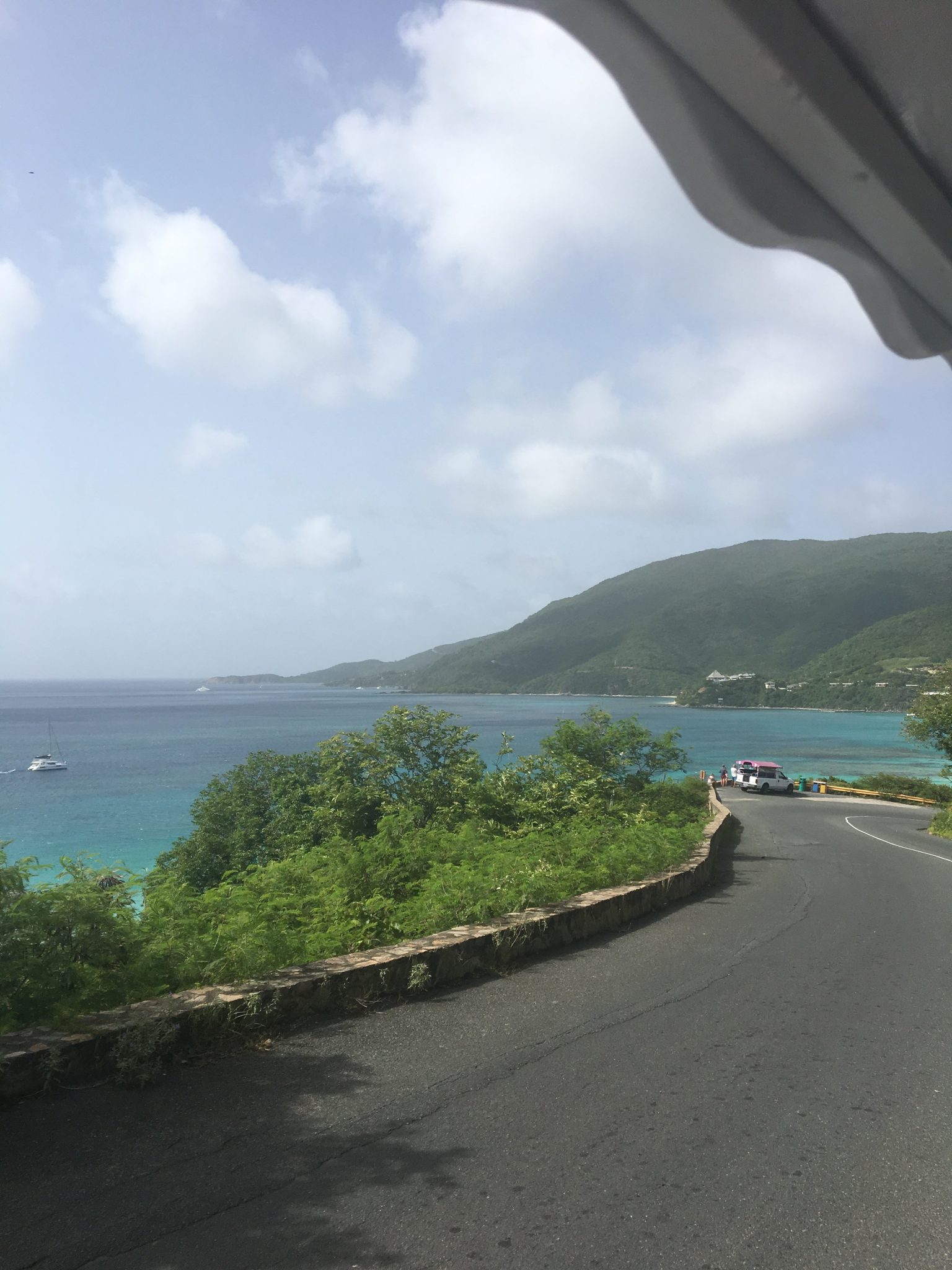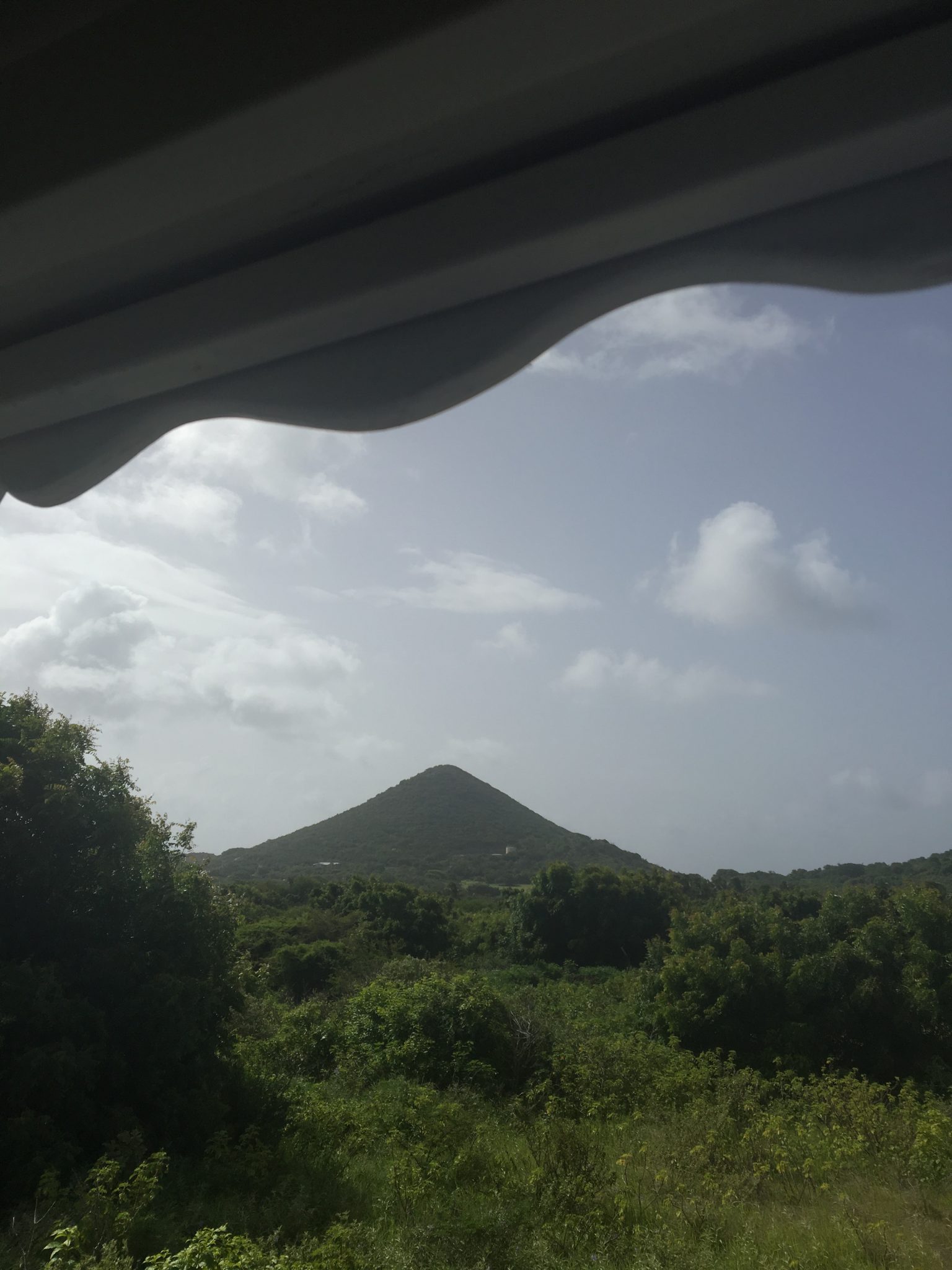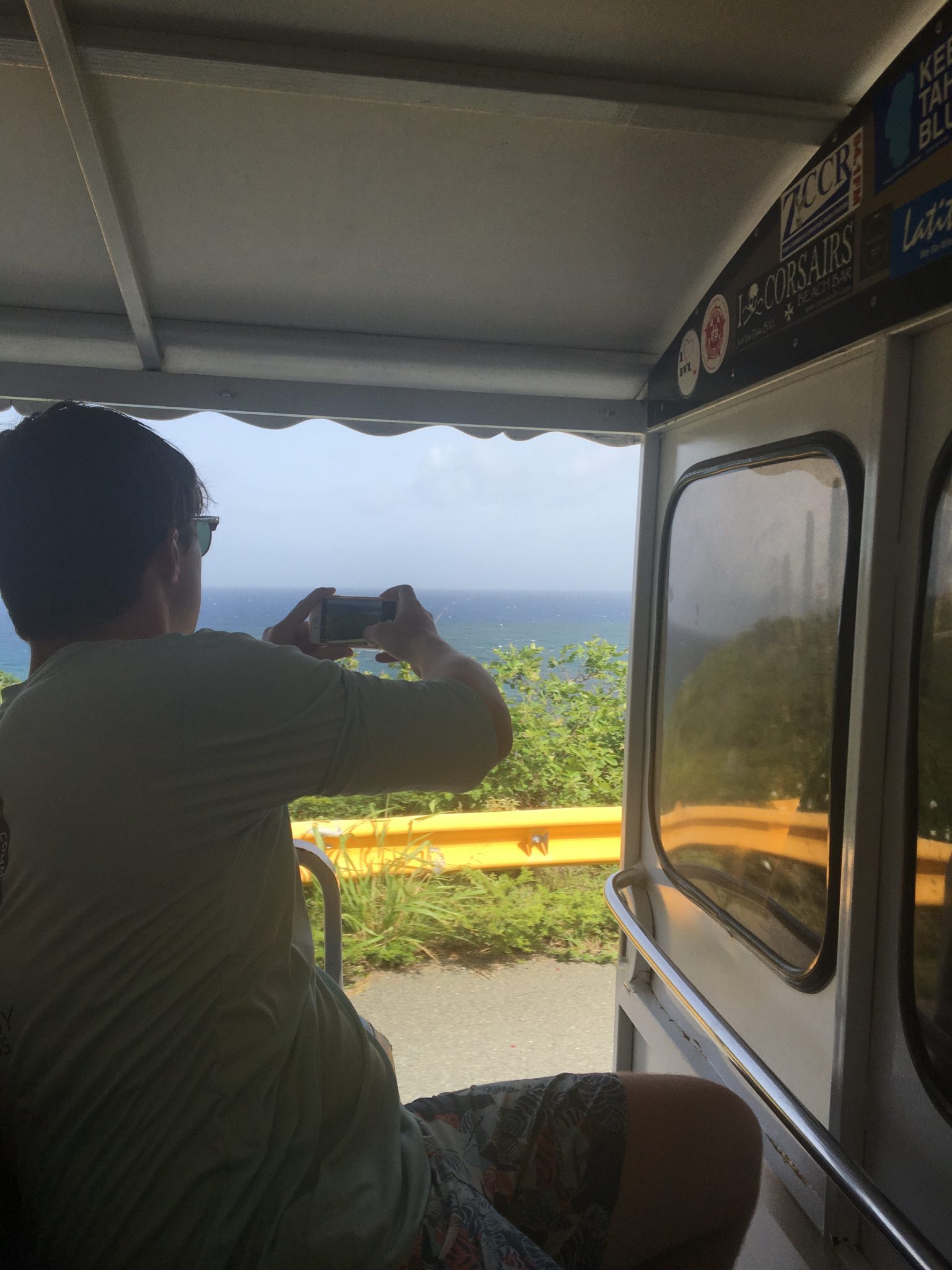Today, for our first dive, we went to the Kodiak Queen shipwreck and explored the rooms inside. After exploring it for around 30 minutes we resurfaced and drove to Biras Creek to observe the mangrove trees. Our dive instructors gave us a quick lesson on the different purposes mangrove trees serve on the island and told us that they help prevent the land near the water from eroding. The trees are able to do this because of their extensive root systems and the great number of trees there are in the area. The trees are able to survive in such salty waters because of the way they “sweat” the salt out of their leaves. By releasing the salt, they are able to consume and use freshwater while growing in salt water. Mangrove roots also provide a safe place for fish to lay their eggs and try to keep them hidden from predators such as barracudas, which we actually saw swimming around the trees. In addition to fish laying eggs near the roots of the trees, reef sharks actually give live birth near the trees so they can remain in the safety of the trees and and have easy access to food until they are mature enough to leave the shore and travel to the reefs. As we explored the area near the mangrove trees we frequently saw marine life like sea cucumbers, sea pearls, sea urchins, and snails which we had seen yesterday at Savannah Bay in the tub of water. I thought it was much more interesting to see these organisms in their true habitats rather than an artificial habitat they were placed in after they were captured. As we come closer to the end of the trip, I’m excited to do just about anything we have left to do while we are here. I’ve really enjoyed the time I’ve spent here with my Jesuit brothers, and I’d definitely do it over again.






